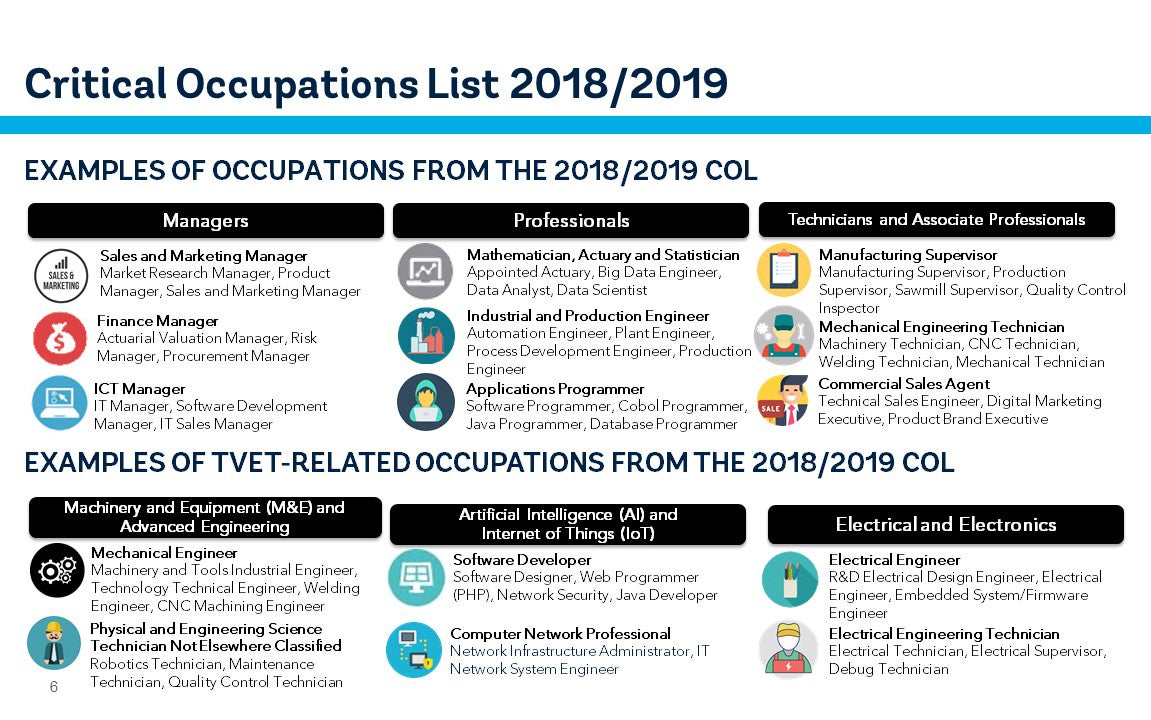 The Critical Occupations List in Malaysia monitors occupational shortages and addresses these gaps for the future of the country’s labor market.
The Critical Occupations List in Malaysia monitors occupational shortages and addresses these gaps for the future of the country’s labor market.
New technologies, digitization, and automation are having a profound impact on the demand for workers across the world. New types of work are emerging, expectations of workers’ skills are changing, and some jobs are disappearing. In this environment, policymakers need to be a bit like football managers in the off season: identifying where last year’s team came up short and working to fill the gaps through training and new hires.
Labor market shortages can disrupt economic growth, reduce output, and undermine productivity growth. If shortages persist in the long run, countries can become less competitive because businesses lack the talent to innovate. Identifying labor market shortages as they arise and developing strategies to fill them is therefore important to maintain productivity and competitiveness. Many countries around the world experience labor shortages, and Malaysia is no exception.
Shortages have arisen in Malaysia for several reasons. First, Malaysia has a relatively small working age population, which limits labor supply. Second, Malaysia’s strong economic growth in recent years has resulted in a tight labor market with low unemployment rates, limiting the workers available for employers to hire. Finally, the shifts brought about by technological disruption have resulted in a constantly changing mix of sophisticated skills that makes it challenging for policymakers, employers, and students alike to identify what skills are needed.
In 2014, the Government of Malaysia established a Critical Skills Monitoring Committee with the mandate to monitor skills imbalances. The committee, working with the World Bank, created the “Critical Occupations List,” a list of occupations for which there is strong evidence that there is significant labor market shortage that may be alleviated through government action.
It seeks to identify and draw stakeholder attention to a set of occupations that are critical to the continued growth and development of the Malaysian economy but are currently difficult to fill. The occupations that are skilled, sought-after, and strategic in the list span a range of fields and professions from mathematicians, actuaries, and statisticians to software developers and electrical engineers.

The committee is composed of representatives from TalentCorp and the Institute of Labor Market Information and Analysis (ILMIA), which are both under the Ministry of Human Resources. Each agency brings a unique strength to the committee. TalentCorp nurtures talent in Malaysia through initiatives that build skills, networks, and seek to make living and working in Malaysia more attractive. Thus, TalentCorp brings to the Critical Skills Monitoring Committee its partnerships with the private sector and its knowledge of the skills ecosystem in Malaysia.
ILMIA undertakes analysis of the labor market and human capital issues and has built a data warehouse of labor market information. Thus, ILMIA brings expertise in labor market analytics and access to and understanding of Malaysia’s different sources of labor market information.
In defining the occupations that appear on the list, a methodology based on international best practices and a mixed methods approach were used. Occupations are categorized as middle- or high-skilled, sought-after, and strategic. The categorization involves rigorous analysis of quantitative and qualitative evidence during the “top-down” and “bottom-up” stages.
The “top down” stage generates objective evidence of shortages that is comparable over time and across occupations by analyzing survey and administrative data. The “bottom up” stage solicits evidence of shortages directly from employers and other stakeholders and also generates contextual knowledge about why shortages are present.
The Critical Skills Monitoring Committee is constantly looking for innovative ways to improve the list. One innovation is its application of real-time labor market information. First, online job posting data has been used as a proxy for job openings to create indicators of shortages. Second, the online job posting data has been utilized to provide detailed information on the skills needed and experiences required for occupations in shortage.
Institutions of higher education are using the Critical Occupations List to inform the development of courses of study that meet industry demand. As part of the government’s efforts to leverage the Malaysian diaspora, TalentCorp is currently using the list in its Returning Expert Program to help attract qualified Malaysians working abroad to return to Malaysia for employment in shortage occupations.
Malaysia’s experience shows that shortage lists should be updated regularly and improved continuously, should be based on rigorous evidence, and should be transparent. The lists should be developed by a specialized agency but should incorporate evidence from public and private sector stakeholders.
The Critical Occupations List still faces several challenges that are also instructive for practitioners in other countries considering creating their own shortage list. These include the challenge of classifying job titles and occupations into standardized occupations, which is the backbone of the Critical Occupations List and similar shortage lists – and the creation of shortage lists that reflect sub-national labor market dynamics.
The report ‘Monitoring Occupational Shortages: Lessons from Malaysia’s Critical Occupations List’ can be found here.


Join the Conversation